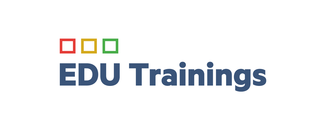Detail kurzu
SAS® Biostatistics Learning Subscription
EDU Trainings s.r.o.
Popis kurzu
This learning subscription is for business analysts, statisticians, researchers, econometricians, and epidemiologists using SAS/STAT software in a variety of fields, including public health, pharmaceuticals, and medicine. SAS/STAT goes through rigorous software testing and quality assurance programs so that you can be confident that the code you produce is documented and verified to meet corporate and governmental compliance requirements. These biostatistics courses cover how to evaluate various statistical methods in order to apply the best one to answer your research questions. Learn how to:
Calculate summary statistics, fit various regression methods, and interpret results.
Establish causal inferences using methods like two-stage modeling, interrupted time series, regression discontinuity, and propensity score matching.
Analyze the number of occurrences of an event or the rate of occurrence as a function of some predictor variable.
Use various time-to-event survival analysis methods and their practical implementation.
Analyze linear mixed models using the MIXED procedure.
Choose the most appropriate statistical method to answer your research questions.
Calculate summary statistics, fit various regression methods, and interpret results.
Establish causal inferences using methods like two-stage modeling, interrupted time series, regression discontinuity, and propensity score matching.
Analyze the number of occurrences of an event or the rate of occurrence as a function of some predictor variable.
Use various time-to-event survival analysis methods and their practical implementation.
Analyze linear mixed models using the MIXED procedure.
Choose the most appropriate statistical method to answer your research questions.
Obsah kurzu
Includes the following on-demand courses:1. Regression Methods Using SAS Viya
This course covers nine regression methods. The models include linear, logistic, quantile, generalized linear, generalized additive, mixed, survival, nonlinear, and partial least squares. The applications, strengths, and weaknesses of each method are discussed, along with how the methods are implemented in SAS Viya. A comparison of the SAS Viya procedures and SAS/STAT procedures for each method is also shown. Examples in the course show applications in banking, financial services, direct marketing, insurance, telecommunications, medical, and academic fields.
The self-study e-learning includes:
Annotatable course notes in PDF format.
Virtual lab time to practice.
2. Establishing Causal Inferences: Propensity Score Matching, Heckman’s Two-Stage Model, Interrupted Time Series, and Regression Discontinuity Models
This course introduces some methods commonly used in program evaluation and real-world effectiveness studies, including two-stage modeling, interrupted time-series, regression discontinuity, and propensity score matching. These methods help address questions such as: Which medicine is more effective in the real world? Did an advertising program have an impact on sales? More generally, are the changes in outcomes causally related to the program being run?
3. Fitting Poisson Regression Models Using the GENMOD Procedure
This course is for those who analyze the number of occurrences of an event or the rate of occurrence of an event as a function of some predictor variables. For example, the rate of insurance claims, colony counts for bacteria or viruses, the number of equipment failures, and the incidence of disease can be modeled using Poisson regression models.
This course includes practice data and exercises.
4. Survival Analysis Using the Proportional Hazards Model
This course discusses survival analysis concepts with an emphasis on health care problems. The course focuses on the Cox proportional hazards model, not the parametric models, and is not designed for predictive modelers.
5. Mixed Models Analyses Using SAS
This course teaches you how to analyze linear mixed models using the MIXED procedure. A brief introduction to analyzing generalized linear mixed models using the GLIMMIX procedure is also included.
6. Statistical Analysis with the GLIMMIX Procedure
This course focuses on the GLIMMIX procedure, a procedure for fitting generalized linear mixed models.
7. Advanced Statistical Modeling Using the NLMIXED Procedure
This course teaches you how to use the NLMIXED procedure to fit statistical models.
8. Programming with SAS/IML Software
This course teaches you how to use the IML procedure via the programming language. You benefit from this course if you plan to use SAS/IML for manipulating matrices, simulating data, writing custom statistical analyses, or working with R. The programs in this course require SAS/IML 12.3 or later to run.
The self-study e-learning includes:
Annotatable course notes in PDF format.
Virtual lab time to practice.
9. SAS Programming for R Users
This course is for experienced R users who want to apply their existing skills and extend them to the SAS environment. Emphasis is placed on programming and not statistical theory or interpretation. Students in this course should have knowledge of plotting, manipulating data, iterative processing, creating functions, applying functions, linear models, generalized linear models, mixed models, stepwise model selection, matrix algebra, and statistical simulations.
10. Responsible Innovation and Trustworthy AI
This course is designed for anyone who wants to gain a deeper understanding about the importance of trust and responsibility in AI, analytics, and innovation. The content is especially geared to those who are making business decisions based on machine learning and AI systems and those who are designing and training AI systems.
Whether you are a programmer, an executive, an advisory board member, a tester, a manager, or an individual contributor, this course helps you gain foundational knowledge and skills to consider the issues related to responsible innovation and trustworthy AI. Empowered with the knowledge from this course, you can strive to find ways to design, develop, and use machine learning and AI systems more responsibly.
This course will be released several modules at a time until all modules are available. We expect that each module can be completed in under an hour, and you can work at your own pace to complete the material. As we release new modules, you might lose progress through the material that you have completed, so please make a note of where you are leaving off before exiting the course.
Cieľová skupina
For anyone interested in a career focused on improving human health through the application of statistical science. Become well-versed in the tools and methods that you need to analyze, model, and interpret biostatistical data.
Certifikát
Na dotaz.
Hodnotenie
Organizátor
Podobné kurzy
podľa názvu a lokality








